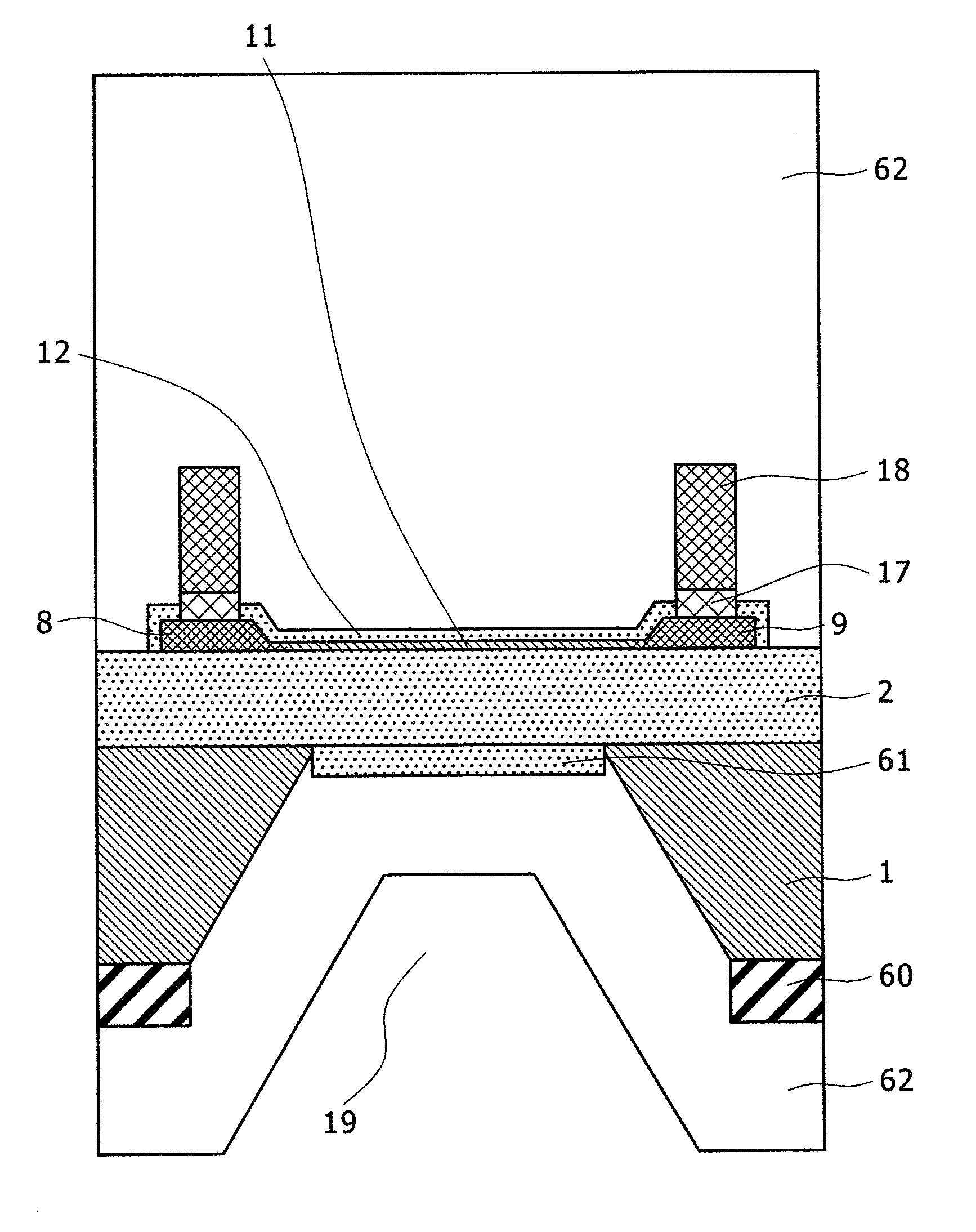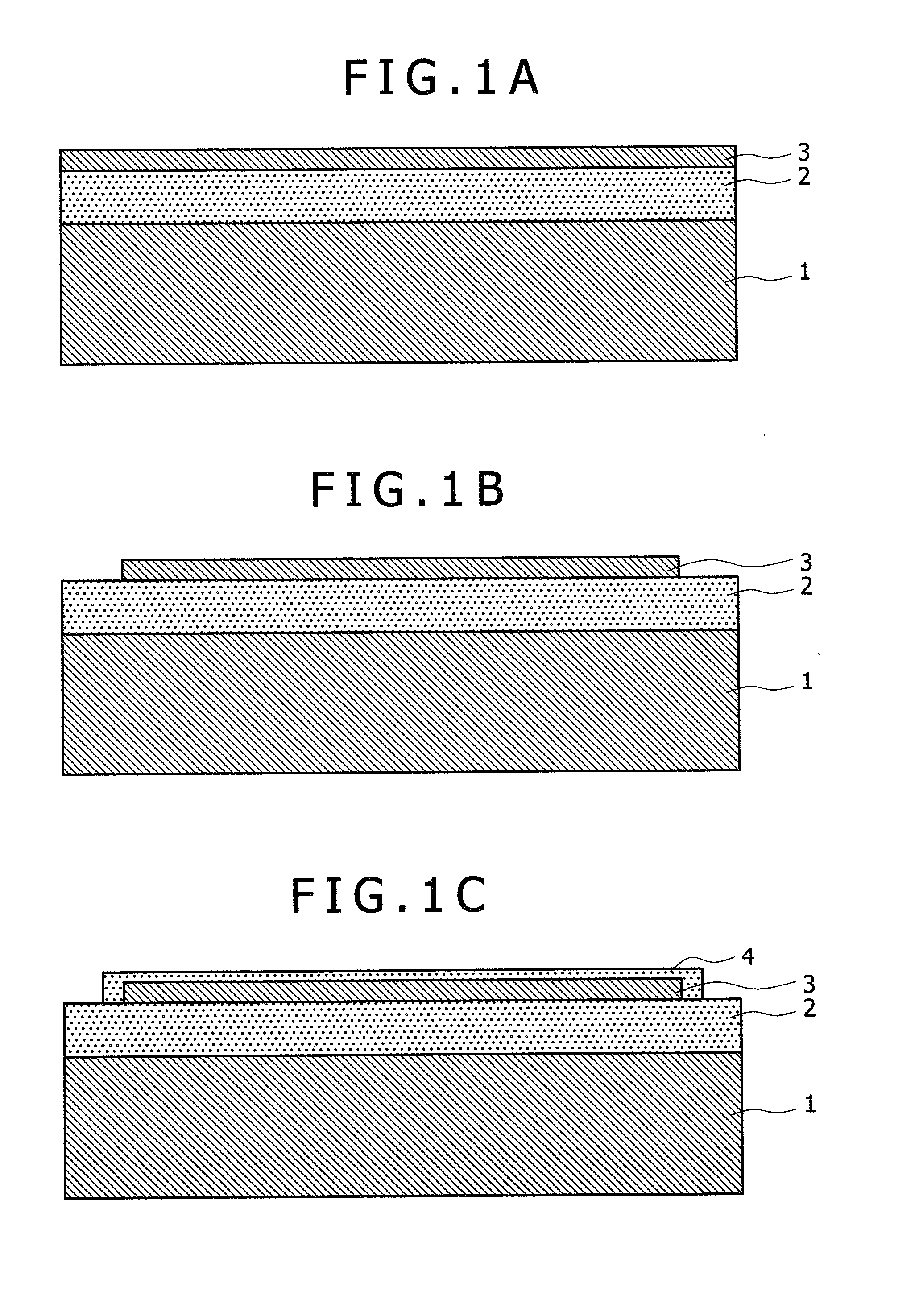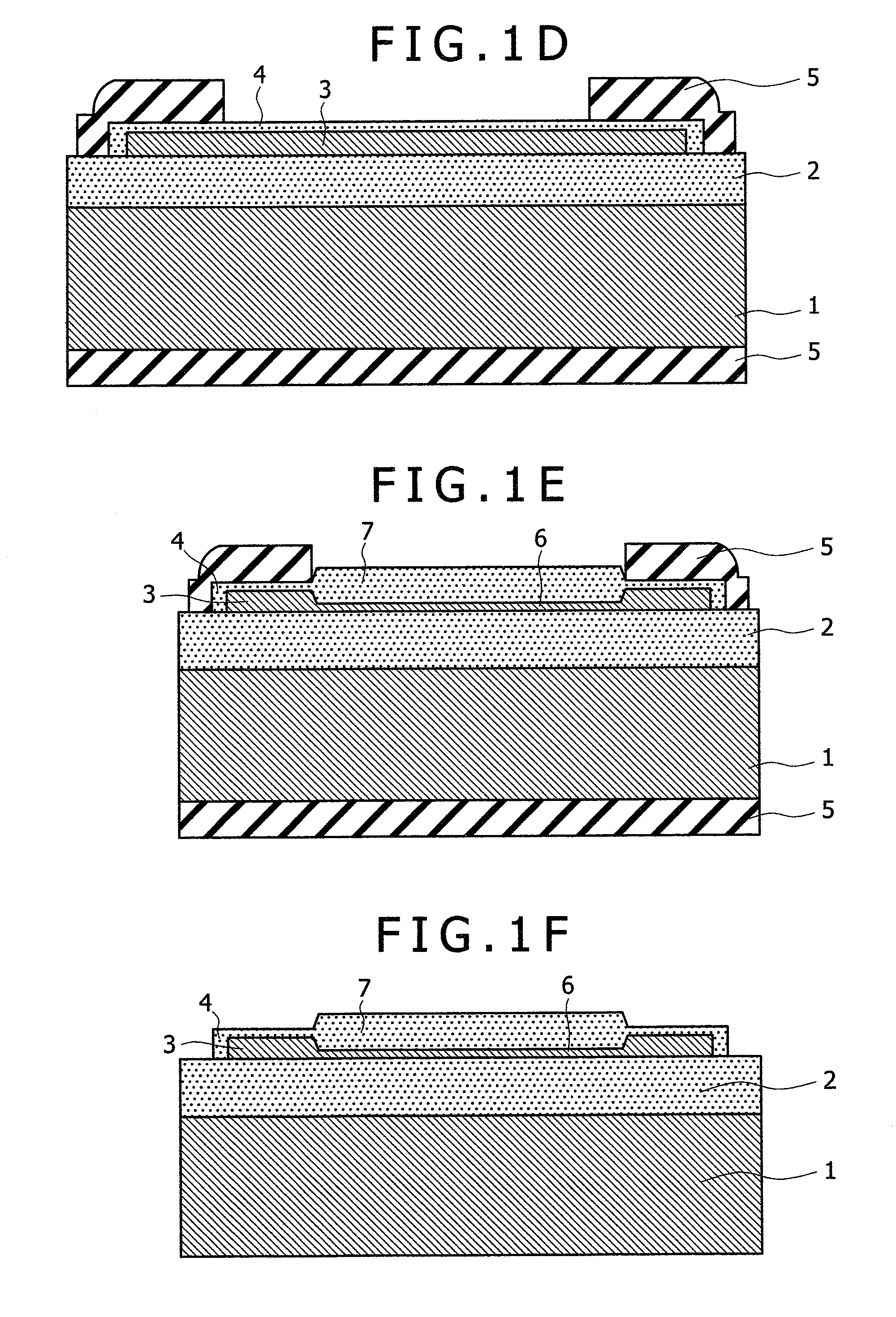Semiconductor device
- Summary
- Abstract
- Description
- Claims
- Application Information
AI Technical Summary
Benefits of technology
Problems solved by technology
Method used
Image
Examples
first embodiment
[0131]In the embodiment, a silicon laser prepared by a method of easily forming the silicon laser by using a general silicon process and a manufacturing method thereof will be disclosed.
[0132]FIGS. 1A to 1R show cross-sectional structures of a manufacturing process sequence. FIGS. 2A to 2R are schematic views of a manufacturing process sequence viewed from an upper part of a substrate. Herein, FIGS. 1A to 1R are horizontal cross-sectional views of FIGS. 2A to 2R, respectively. For example, FIG. 1R shows a structure taken along a cross section 23 in FIG. 2R. In the embodiment, a completed drawing of a device is shown in FIGS. 1R and 2R.
[0133]Hereinafter, a manufacturing process will be sequentially described.
[0134]First, as shown in FIG. 1A, an SOI substrate as a support substrate is prepared on which a silicon substrate 1, a buried oxide (hereinafter, referred to as ‘BOX’) 2, and a silicon on insulator (hereinafter, referred to as ‘SOI’) 3 are laminated from the bottom thereof. Even...
second embodiment
[0165]In this embodiment, a silicon laser having a mirror structure and using a distributed Bragg reflector (hereinafter, referred to as ‘DBR’) and a manufacturing method thereof will be disclosed.
[0166]FIGS. 1A to 1G and FIGS. 3H to 3M show cross-sectional structures for each manufacturing process sequence. FIGS. 2A to 2G(2) and FIGS. 4H to 4M are schematic views of a manufacturing process from an upper part of a substrate. Herein, FIGS. 1A to 1G and FIGS. 3H to 3M are horizontal cross-sectional views of FIGS. 2A to 2G(2) and FIGS. 4H to 4M. For example, FIG. 3M shows a structure taken along a cross sectional 33 in FIG. 4M. In the embodiment, a completed drawing of a device is shown in FIGS. 3M and 4M.
[0167]First, after thin silicon 6 is formed by fabricating the device according to a manufacturing process sequence shown in FIGS. 1A and 1G and FIGS. 2A and 2G(2) by the same manufacturing process as the first embodiment, a p-type Si electrode 8 and an n-type Si electrode 9 are forme...
third embodiment
[0176]In this embodiment, a DFB type silicon laser and a manufacturing method thereof are disclosed.
[0177]FIGS. 1A to 1G and FIGS. 5H to 5K show a cross-sectional structure for each manufacturing process sequence. FIGS. 2A to 2G(2) and FIGS. 6H to 6K are schematic views of a manufacturing process from an upper part of a substrate. Herein, FIGS. 1A to 1G and FIGS. 5H to 5K are horizontal cross-sectional views of FIGS. 2A to 2G(2) and FIGS. 6H to 6K. For example, FIG. 5K shows a structure taken along a cross sectional 42 in FIG. 6H. In the embodiment, a completed drawing of a device is shown in FIGS. 3M and 4M.
[0178]First, after thin silicon 6 is formed by fabricating the device according to the manufacturing process sequence shown in FIGS. 1A and 1G and FIGS. 2A and 2G(2) by the same manufacturing process as the first embodiment, a p-type Si electrode 8 and an n-type Si electrode 9 are formed by injecting impurities and performing activation heat treatment thereon as shown in FIGS. 1...
PUM
 Login to View More
Login to View More Abstract
Description
Claims
Application Information
 Login to View More
Login to View More - R&D
- Intellectual Property
- Life Sciences
- Materials
- Tech Scout
- Unparalleled Data Quality
- Higher Quality Content
- 60% Fewer Hallucinations
Browse by: Latest US Patents, China's latest patents, Technical Efficacy Thesaurus, Application Domain, Technology Topic, Popular Technical Reports.
© 2025 PatSnap. All rights reserved.Legal|Privacy policy|Modern Slavery Act Transparency Statement|Sitemap|About US| Contact US: help@patsnap.com



